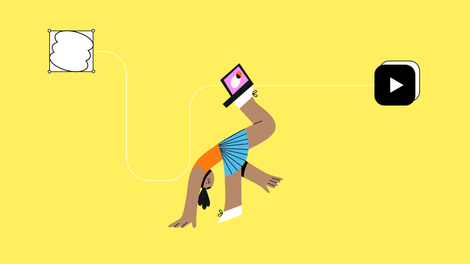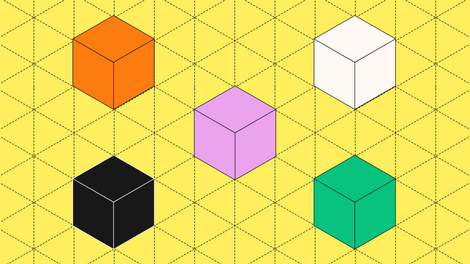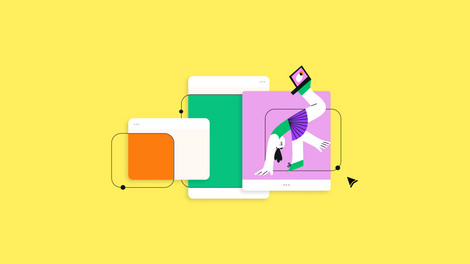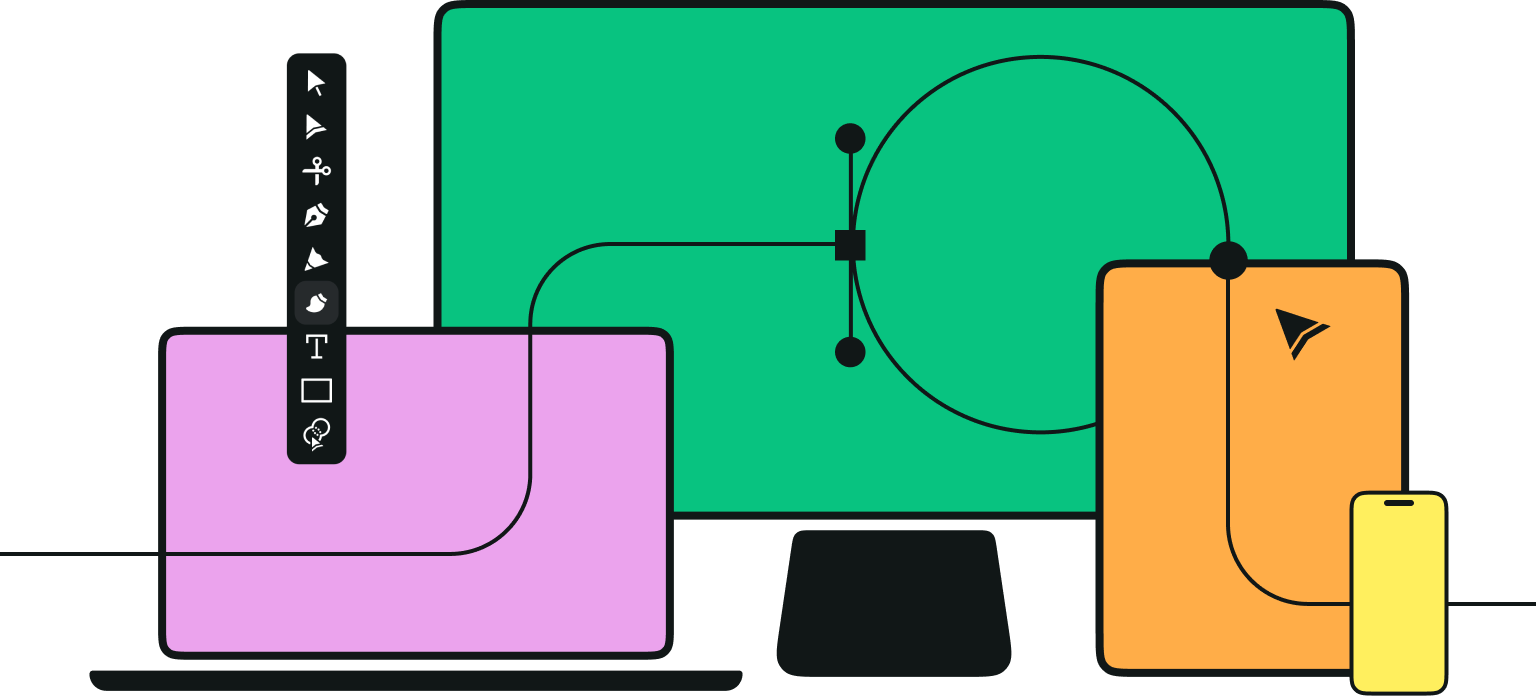Graphic design is so much more than a technical skill set – it's a complex creative process based on design principles, client communication, and the company's marketing strategy.
Not only do graphic design professionals possess a wide variety of visual design skills, but they're also often equally adept at photography, web design, user experience (UX) design, product design, and even content writing skills.
Highly artistic designers sometimes market themselves as professional illustrators who create branded corporate illustrations. Others call themselves digital designers, logo designers, typographers, marketing designers, brand designers, etc., depending on their preferred areas of expertise.
Does this sound like all that and a bag of chips? Well, it is. But finding these unicorn designers isn't as easy as it may seem.
We'll look at what exactly you can expect from your new graphic designer, how to find a great candidate, and how to do online portfolio reviews to assess the quality of their work.
Jumpstart your ideas with Linearity Curve
Take your designs to the next level.
What does graphic design entail?
Firstly, just because graphic designers tend to be great at technical and creative problem-solving doesn't mean that you can expect your new graphic designer to be your entire marketing team, plus look after your website maintenance.
Yes, designers out there, we know you can relate!
So, what is graphic design? The history of graphic design arguably stretches back to ancient cave paintings. However, the term first appeared in book designer William Addison Dwiggins' 1922 essay, A New Kind Of Printing Calls For New Design.
What we know as "graphic design" today follows the trajectory of print media very closely, and new technologies have produced increasing specializations. This is why Dwiggins felt that a new term was needed to describe his job.
What a graphic designer does
- Works with images and fonts to create an array of printed and/or digital media.
- Conceptualizes new and interesting ways to bring a message across, which includes anything from advertising to corporate branding.
- Prepares design files in the correct sizes and file types for their real-world execution, be it posters, packaging, vehicle decals, billboards, websites, etc.
- In smaller teams, graphic designers work closely with clients to meet their design briefs and manage their expectations. In larger teams, especially in agencies, this is managed by an Art Director.
- Liaise with printers, web developers, copywriters, art directors, photographers, videographers, motion designers, marketing teams, etc., to execute ideas.
What a graphic designer shouldn't be asked to do
- Unjamming printers and figuring out why the internet connection isn't working.
- Photography, filming, and video postproduction with motion graphics.
- Creating animations.
- Copywriting and social media posts.
- Building and updating websites.
As you can see, graphic design is already a broad category that can include anything from preparing presentation slides to drawing illustrations.
Graphic designers are incredibly creative, talented folks who are used to working with a wide range of media – which makes sense why they often have a full plate of responsibilities.
This is why it's important for you to understand what you can and shouldn't expect your graphic designer to do unless discussed and agreed upon with the candidate beforehand.
So, let's look at how to put together a good job description for the graphic designer position at your company.
Graphic designer job description
Experienced designers have crafted their own defining design styles and specialize in certain areas. You'll find them working at reputable companies or marketing and advertising agencies. These senior designers usually leave their jobs to start their own companies or become amazing freelance designers.
Junior graphic designers may be fresh graduates from art, design, business, or marketing schools and have possibly gained some experience through internships or freelance graphic design gigs.
Try to tailor your job description to the type of candidate you want to attract. This applies to your language use, too.
Some job descriptions are to the point and soulless. Others are artsy and vague.
While you want your vacancy to sound fun and exciting, you must strike a balance to communicate what criteria you're looking for in a potential candidate.
Unleash Your Creative Potential in Design
Discover the endless possibilities of illustration in design. Learn how our tools can help you create stunning, unique designs effortlessly.
You also want to write a short paragraph about your company, its mission and values, and its culture. This will help you attract the right kinds of candidates for your company and ensure their work ethics resonate with your company's vision.
Graphic designer job titles
Many job titles fit the role of a graphic designer, with each variation highlighting specific duties or core skills. When choosing the title of your job description, think about what would catch the eye of the type of designer you want to attract.
Using "junior" in the title creates the expectation of an entry-level job with a salary to match. This role doesn’t usually require much experience and must allow time and space to make mistakes to learn and grow into a graphic designer role.
Using "senior" in the title immediately shows that the role entails more responsibilities and weight in decision-making and requires a higher level of experience and competence.
We've listed a few possible job titles below to give you an idea of the scope of graphic design jobs that don't involve the additional responsibilities we discussed earlier (unless agreed upon).
- Art Director
- Mid- to Senior Graphic Designer
- Marketing Graphic Designer
- Junior Graphic Designer
- Junior Presentation Designer
- Associate Graphic Designer
- Freelance Graphic Designer
- Graphic Design Intern
- Digital Graphic Production Designer
Graphic designer job responsibilities
When writing out the job responsibilities or duties, tell the potential candidate what work they'll be doing daily.
Because professional designers are highly creative people who love a good challenge, problem-solving, and professional growth, make sure to highlight the core duties that will enable them to hone their skills and advance their careers.
These are some of the basic requirements of a graphic designer role:
- Analyzing design briefs and determining the scope of graphic design projects.
- Conceptualizing, articulating, and presenting creative solutions to design briefs.
- Planning design projects and budget requirements.
- Creating and testing design files according to specifications and applications.
- Maintaining quality assurance across print formats and digital platforms.
You could add more requirements to this basic list based on their level of seniority and what you need from your graphic designer.
For instance, art directors will do much more conceptualization and project management tasks and rather manage the graphic design team that looks after design execution.
Senior positions often have a training or mentoring component added to their duties to ensure junior graphic designers keep improving and growing.
Graphic designer job specifications or requirements
The job specifications or requirements outline the experience, education, certifications, skills, characteristics, and specific demands the potential candidate must fulfill.
This is usually written in bullet point form and doesn't need flamboyant language. It should be as clear and concise as possible.
Experience
- Junior graphic designer: 0 - 2 years experience in a graphic design role or similar.
- Mid-level graphic designer: 2 - 5 years experience in a graphic designer role.
- Senior graphic designer: 5+ years experience in a graphic designer or art director role.
- Heavy-weight senior graphic designer: 8+ years experience in a graphic designer role.
- A graphic design portfolio showing previous projects or clients they've worked with.
- If applicable, experience working remotely.
Education and certifications
- A bachelor's degree or diploma in graphic design, visual arts, visual communication, industrial design, marketing with a graphic design component/major, or business studies with a marketing/design major.
- Graphic design certification from a trusted online education platform, such as Udemy, Coursera, or Masterclass.
Skills
- Proficient in Adobe Creative Suite or other graphic design software, such as Linearity Curve (formerly Vectornator).
- Proven graphic design abilities, as shown in their portfolio.
- Proficiency in any other software as needed by your company.
- Proficiency in any other language(s) as needed by your company (for instance, in a typesetting or book layout job position).
- Remote-working tools, such as Google Suite (if applicable).
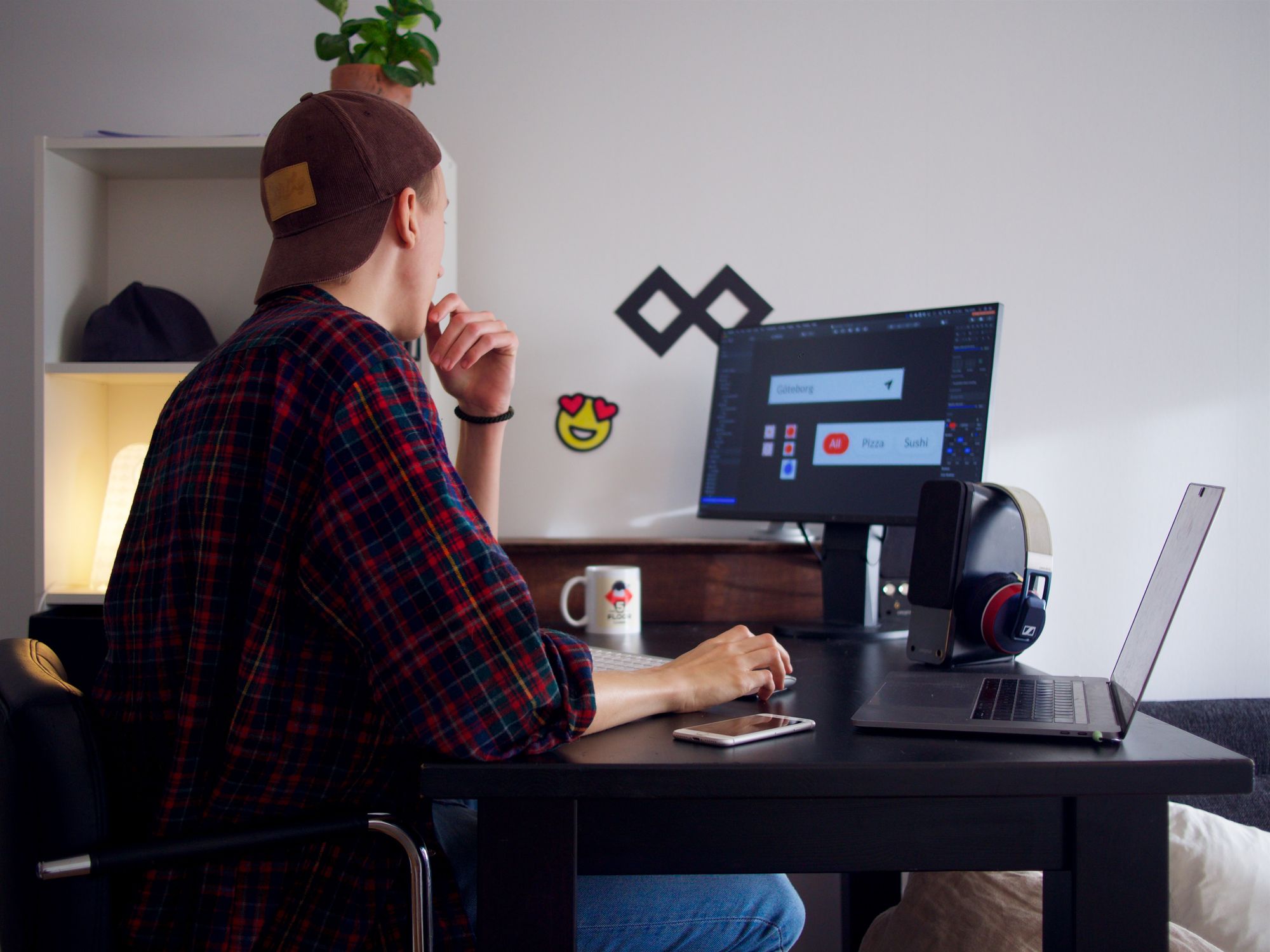
Characteristics or personality traits
These are the "soft skills" you're looking for in a candidate. Besides suiting the job title, these characteristics also outline a cultural fit for your organizational culture.
- Critical thinker
- Hungry to learn
- Eye for detail
- Tenacious
- Familiar with the design process and design thinking
- Punctual
- Great communication skills
- Curious
- Autonomous
- Up to date with the latest design trends
Job demands
These are specific physical activities required by the company. Listing the job demands helps the potential candidate gauge whether they have the physical capacity to complete the tasks.
Master the Art of Brand Illustration
Step into the world of brand storytelling through our detailed workshop. Learn how to design illustrations that resonate and define brand identity.
You can also list whether traveling to an office daily or a few days a week is required. Examples of job demands related to a graphic designer role include:
- At least 7 hours of design time per day in front of a computer screen.
- Content on the screens may have a strobing effect.
Application time frame
Lastly, you must indicate the time frame for the job position. This includes the deadline for job applications and the expected start date.
Consider that most candidates currently employed at another company will need to give at least one month's notice at their workplace.
Ensure you allow enough time to complete any assignment or practical task you ask of them as part of their job application, such as redesigning a famous logo in their style.
Negotiating a graphic designer's salary
How much do graphic designers be paid? Many factors come into play, such as the location of your company and the candidate, their experience level, work hours, etc.
This was the median graphic designer's salary in 2021. You can use this amount to gauge whether your salary offer is up to standard. However, it's a good idea to research graphic designer salaries in your specific area, too.
What your company can offer a graphic designer
Graphic design is a competitive market, and great designers can probably make more money freelancing than working for a company. So, what can you offer to convince them?
Depending on what your potential candidate is looking for in a job offer, you can rarely go wrong in offering great benefits. These can include:
- Flexibility
- Generous leave policies
- Opportunities for upskilling and outlining a career growth trajectory (in other words, potential promotions)
- Team retreats
- Company merch
- Work-from-home equipment stipend
- Free lunches and refreshments
- An employee rewards program
- Mental health resources
- Gym memberships
- Medical aid subsidy
- Retirement fund
- Further education
This is by no means an exhaustive list of benefits that you could add to your graphic designer job offer, but it's a starting point. Benefits could also be less obvious than you think, for instance, allowing pets and children at the office or providing free, on-site daycare facilities for employees at your company.
When considering what benefits to offer, it comes down to shaping the company culture you want at your organization.

How to attract graphic designers to your company
Passive candidates are those not actively looking for new jobs but would consider a role at another company if presented with a better opportunity.
Active candidates are those already disengaged with their current work situation (or are unemployed) and looking for a new or better opportunity.
"Better" doesn't necessarily mean more money – it could be anything significant to the potential candidate to improve their quality of life or advance in their career, such as the benefits listed above.
There are various platforms where you can attract active candidates. Here are some of the ones we recommend:
- Your company's careers page
- Your company's social media account
- LinkedIn Jobs
- Job sites
- Events and exhibitions
- Career days
When choosing platforms to advertise graphic designer roles at your company, be mindful of where your potential candidates will hang out or go looking.
How to find graphic designers
Another way to find active and passive candidates is to search for graphic designer portfolios online and elsewhere.
Think beyond the traditional "looking for work" ads and platforms and find amazing designers in the creative online spaces where they hang out and show their work.
- Word of mouth – is still one of the best ways to find remarkable people!
- Google Search – many great designers have their own website portfolios
- LinkedIn Recruiter
- Dribbble
- Behance
- Discord Communities
- Slack Communities
- Freelance sites
Assessing a graphic designer's portfolio
Whether it's their personal site, social media, freelancer profile, or CV, here's how to assess a graphic design portfolio to decide whether it's the right candidate for your business.
1. Look for their x-factor
A picture is a thousand words. There are some things that you can't articulate, but you'll know whether you like it or not. Don't look for the run-of-the-mill, trending-right-now stuff. See what makes this potential candidate stick out as a graphic designer.
Their designs don't have to be perfect (there's always room to grow), but their work must have some conceptual framework, interesting thought processes, or quirky originality.
2. See their designs in the real world
Part of proving a graphic designer's experience and creative problem-solving skills is showing how they were executed in the real world. Ask the candidate to provide examples of their work for other companies or printed versions of their design.
Note how they present their solutions, as composition and layout are essential components of successful designs.
3. Ask them to do an assignment
If you like what you see in their portfolio and want to test their creative fit for your team, send a short assignment their way. The application assignment must be within their scope of experience and also challenging enough so that you can test their skills or grit.
Remember to set a realistic timeframe and compensate them fairly for their work! Not only does this show that integrity is important at your company, but it will also indicate their work ethic.
4. Do an interview and check culture fit
Whether you're hiring for remote work, office work, or something in-between, it's always a good idea to meet the potential candidate and see how they carry a conversation.
If possible, rope in some of their potential colleagues to meet the candidate and provide you with their feedback, too. Not only does this help to rule out some of your own biases, but it also allows the candidate to meet your team and decide whether they'd fit into your company culture.
Your next steps
We've looked at the various skills graphic designers can bring to your company, what exactly the role entails, and what you can expect from your new graphic designer.
When advertising open positions for graphic designers at your company, you need to write a comprehensive and attention-grabbing job description. This covers the possible job title, job responsibilities, and job requirements.
A graphic designer is responsible for conceptualizing and creating various visual assets for your company, so they need a specific skill set, educational background, and experience in graphic design.
You can find your next great graphic designer in many places, including traditional word-of-mouth advertising, portfolio sites, and online creative communities. Follow the steps in this article to find an awesome new graphic designer to join your company!
Want to see how artists and graphic designers are using Linearity Curve? Check out our Community Art Gallery and social media.
Jumpstart your ideas with Linearity Curve
Take your designs to the next level.
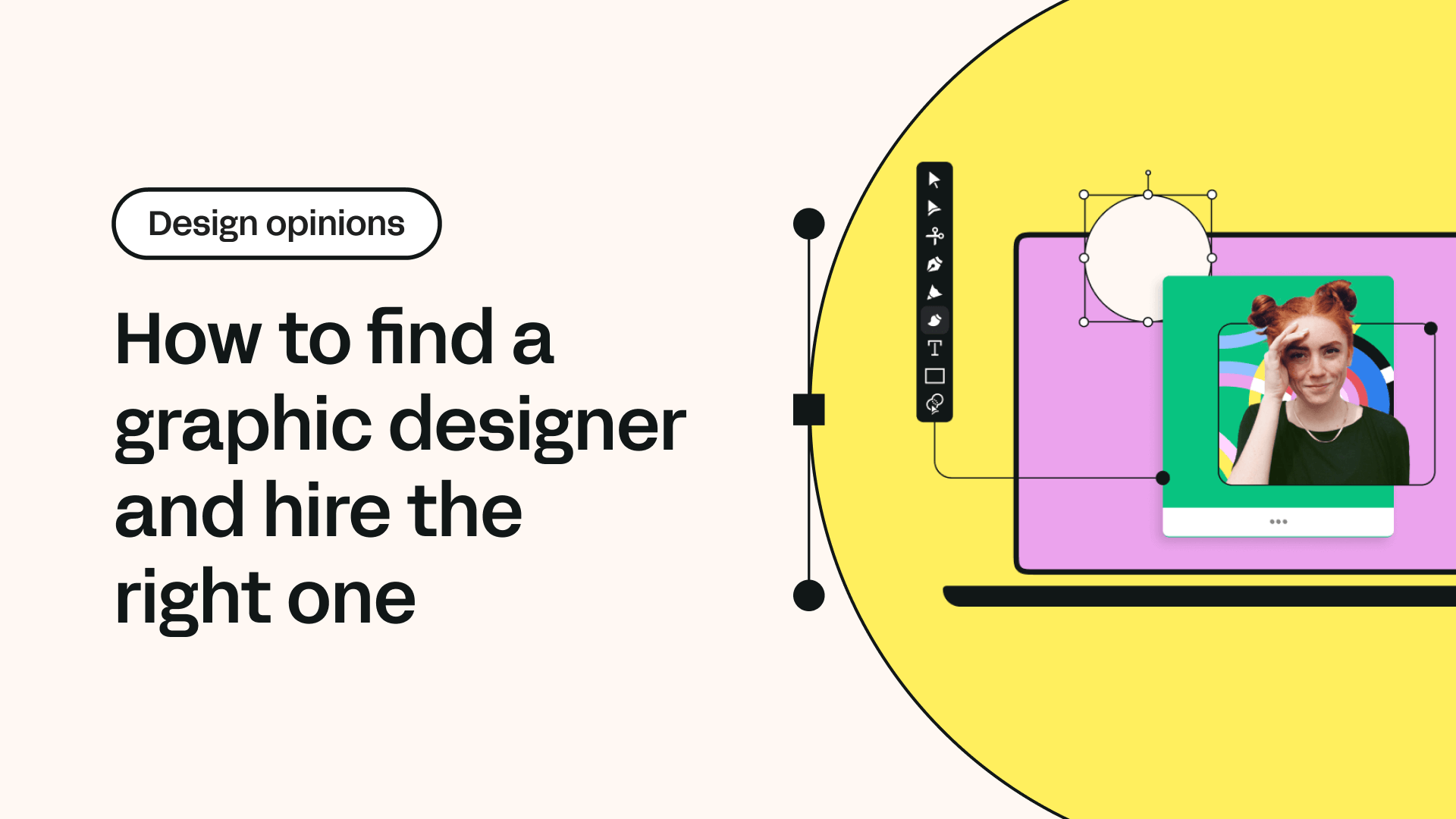
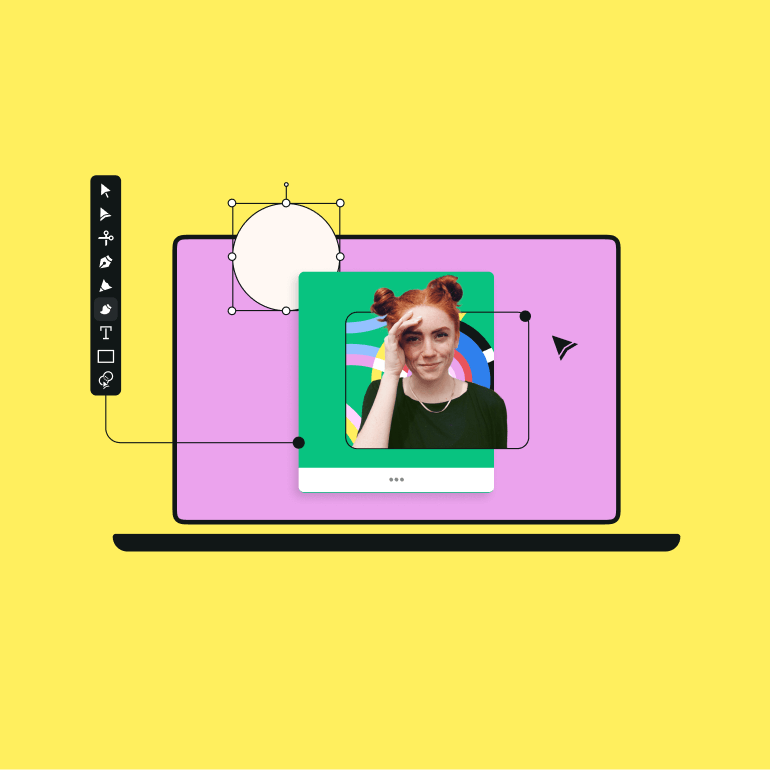
Share this!
Sharné McDonald
Sharné is a contributing writer to the Linearity Blog. She has 10+ years' experience in graphic design and marketing and holds a Master's degree in Art Education.


:quality(75))
:quality(75))
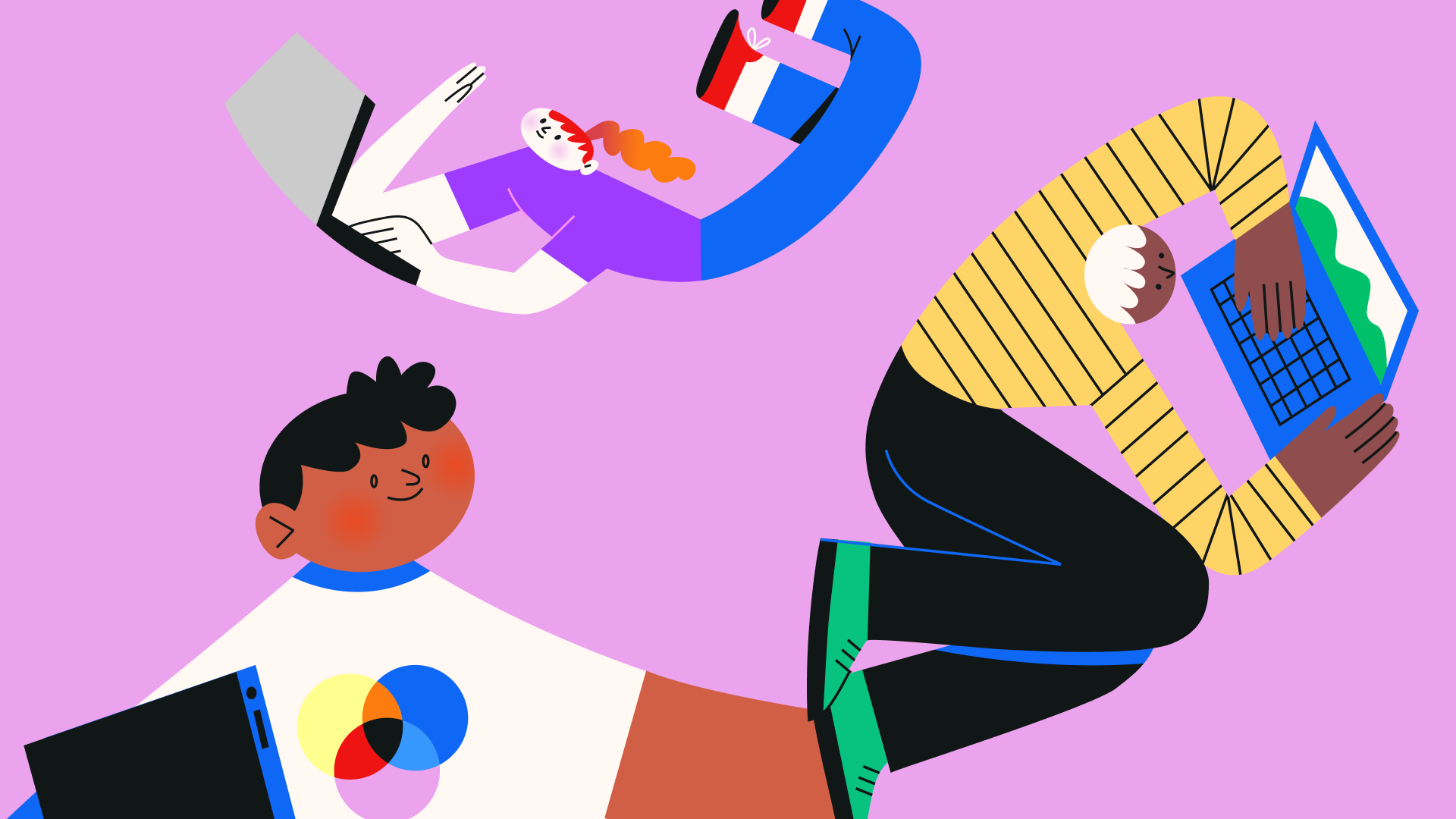
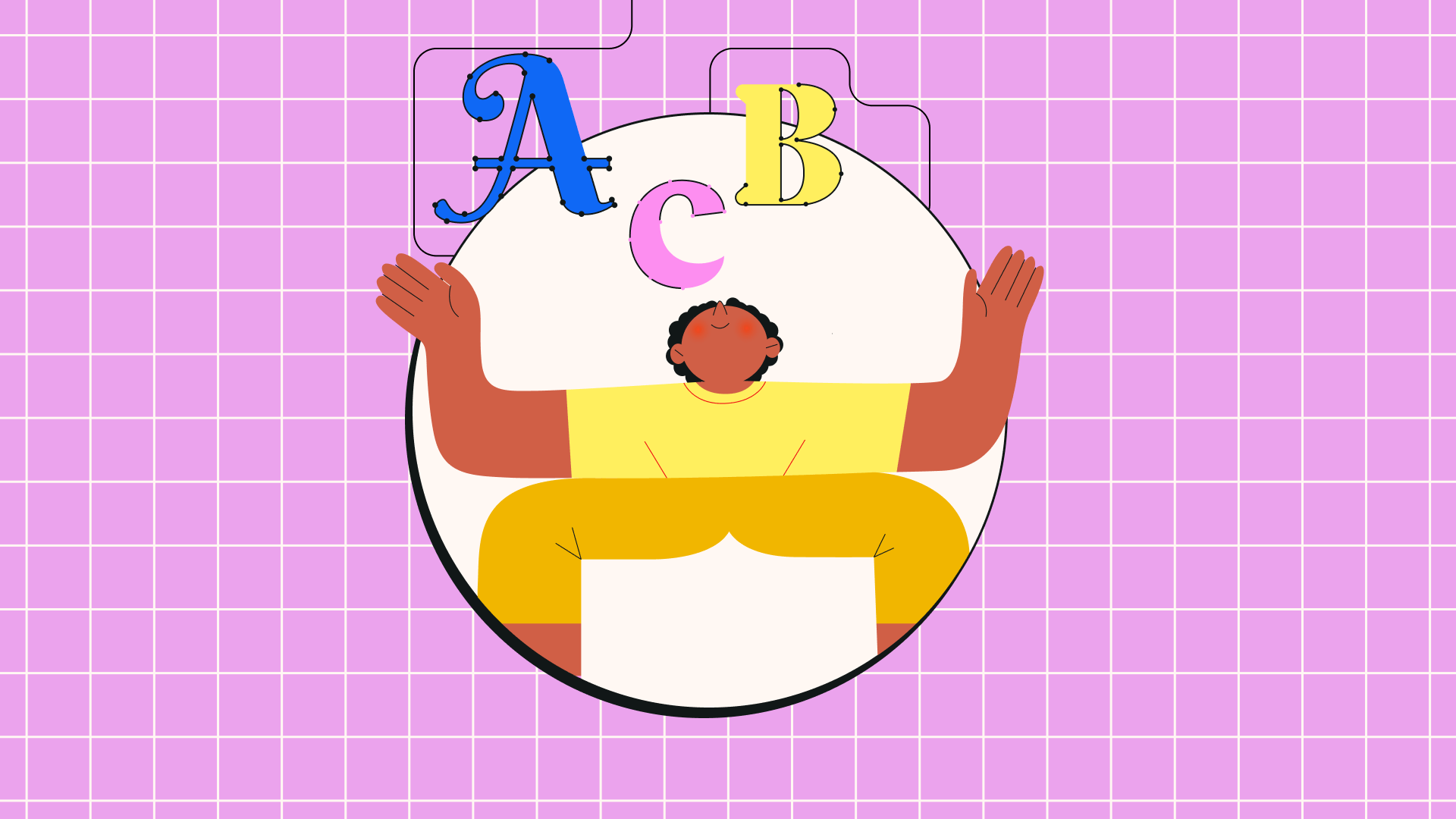
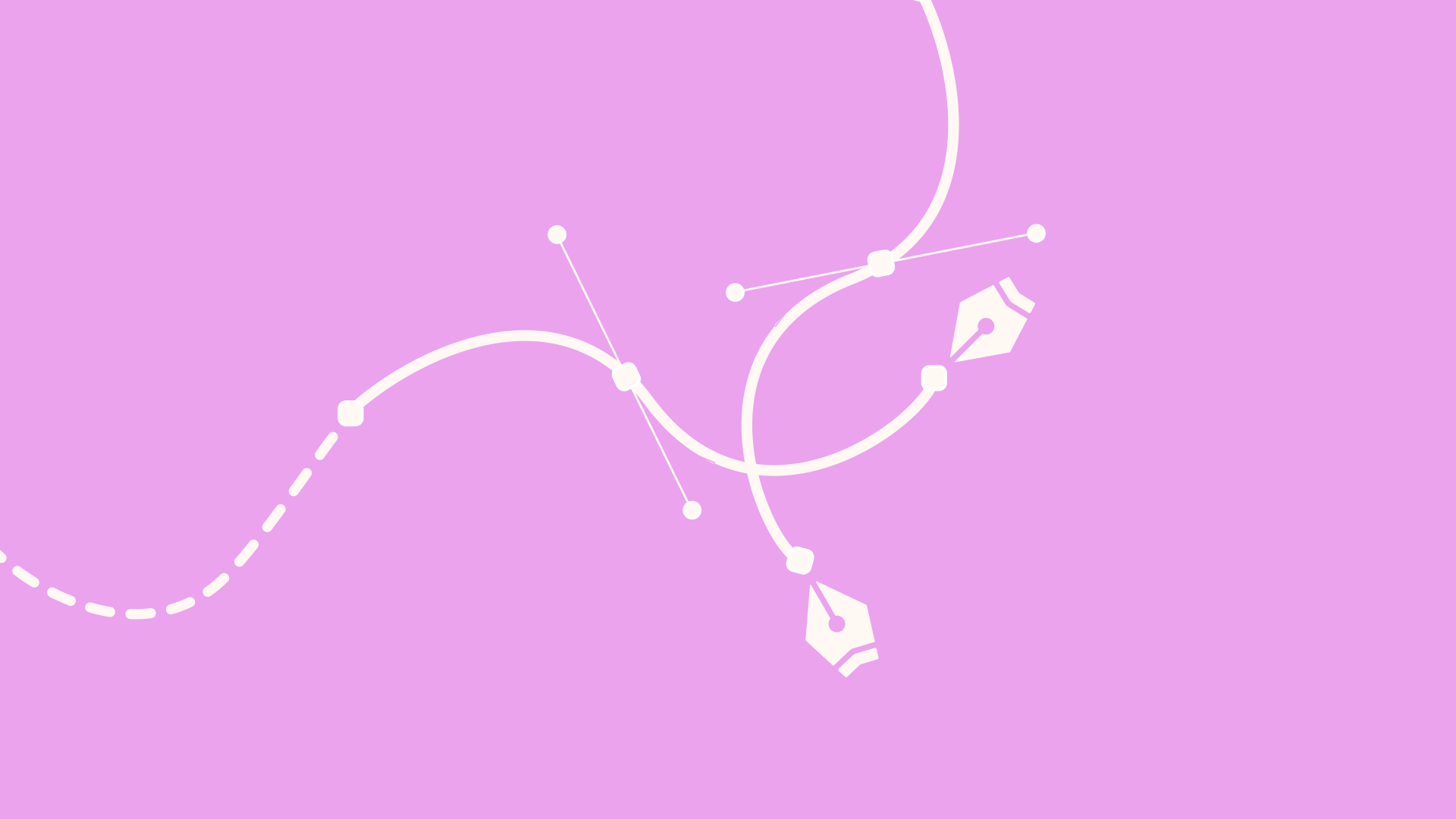
:quality(75))
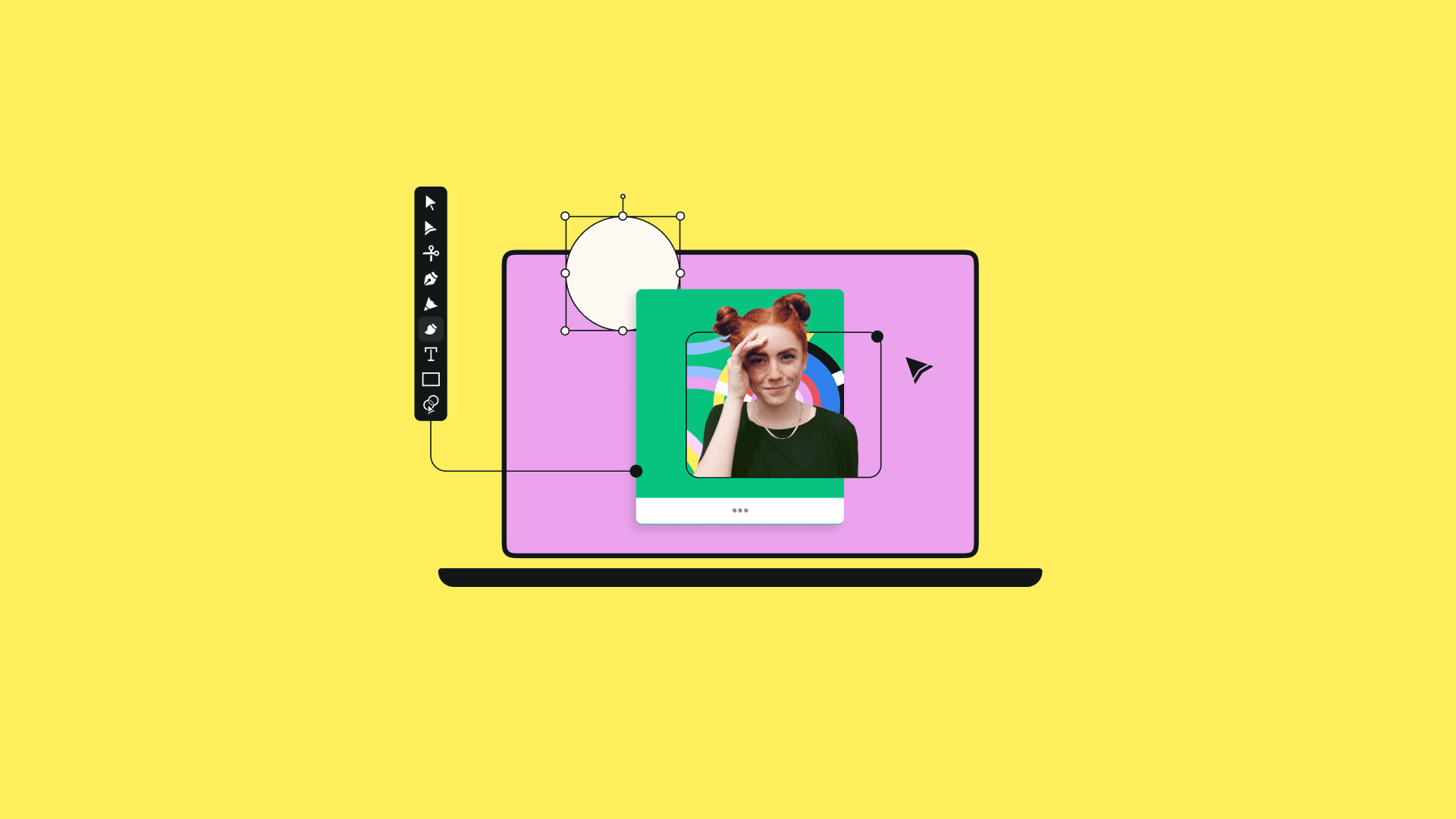
:quality(75))
:quality(75))
